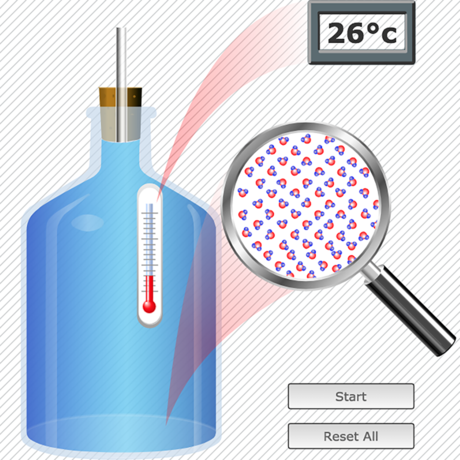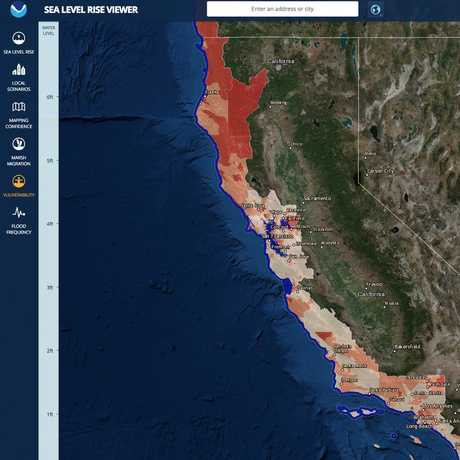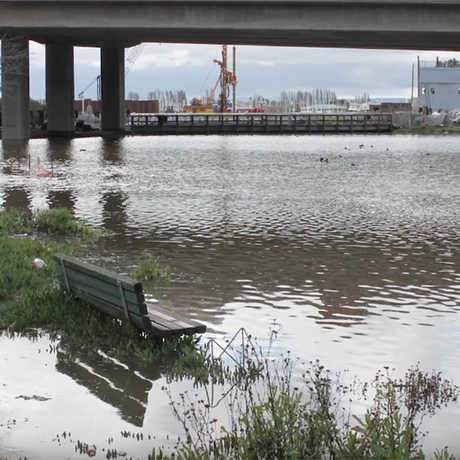
Rising sea levels are about more than just melting ice. Understanding the behavior of water at the molecular scale can help us better prepare for changes on a global scale.
About This Video
Grade level: 6-12
Length: 2.5 minutes
Next Generation Science Standards: HS-ESS2.A, HS-ESS2.D
Video Synopsis
Earth is getting warmer, and as a result, global sea levels are rising. But why is this? What is the connection between rising global temperatures and rising seas? We'll explore how the properties and behavior of water at the molecular scale can impact the earth—and people—on a global scale.
This video was produced in collaboration with the San Francisco Unified School District as a part of their NGSS-aligned high school chemistry curriculum.
Simulation: Heat Energy and Moving Molecules

Visualize the thermal expansion of water at the molecular scale with this interactive simulation from the Lawrence Hall of Science. How does the behavior of water molecules at the molecular scale influence what we observe at the macro scale?
Lesson Plan: Global Climate Change and Sea Level Rise

Do sea levels rise when ice melts? Does it matter whether the ice is on land or in the ocean? In this activity, students will design an experiment to find out. They will collect data, graph their results, and interpret their findings. Along the way, they learn about density, displacement, and climate change.
Photo: NASA
NOAA Sea Level Rise Viewer

How vulnerable is your city or town to sea level rise? Use this web mapping tool from the NOAA Office for Coastal Management to visualize community-level impacts from coastal flooding or sea level rise. Explore how future flooding could impact local landmarks and contribute to socio-economic vulnerability.
Connections to the Next Generation Science Standards
While this video doesn't necessarily cover the following standards in depth, it is a compelling resource you can use to supplement your curriculum that does.
Disciplinary Core Ideas
- HS-ESS2.A Earth Materials and Systems: Earth’s systems, being dynamic and interacting, cause feedback effects that can increase or decrease the original changes.
- HS-ESS2.D Weather and Climate: The foundation for Earth’s global climate systems is the electromagnetic radiation from the sun, as well as its reflection, absorption, storage, and redistribution among the atmosphere, ocean, and land systems, and this energy’s re-radiation into space.
Share This



